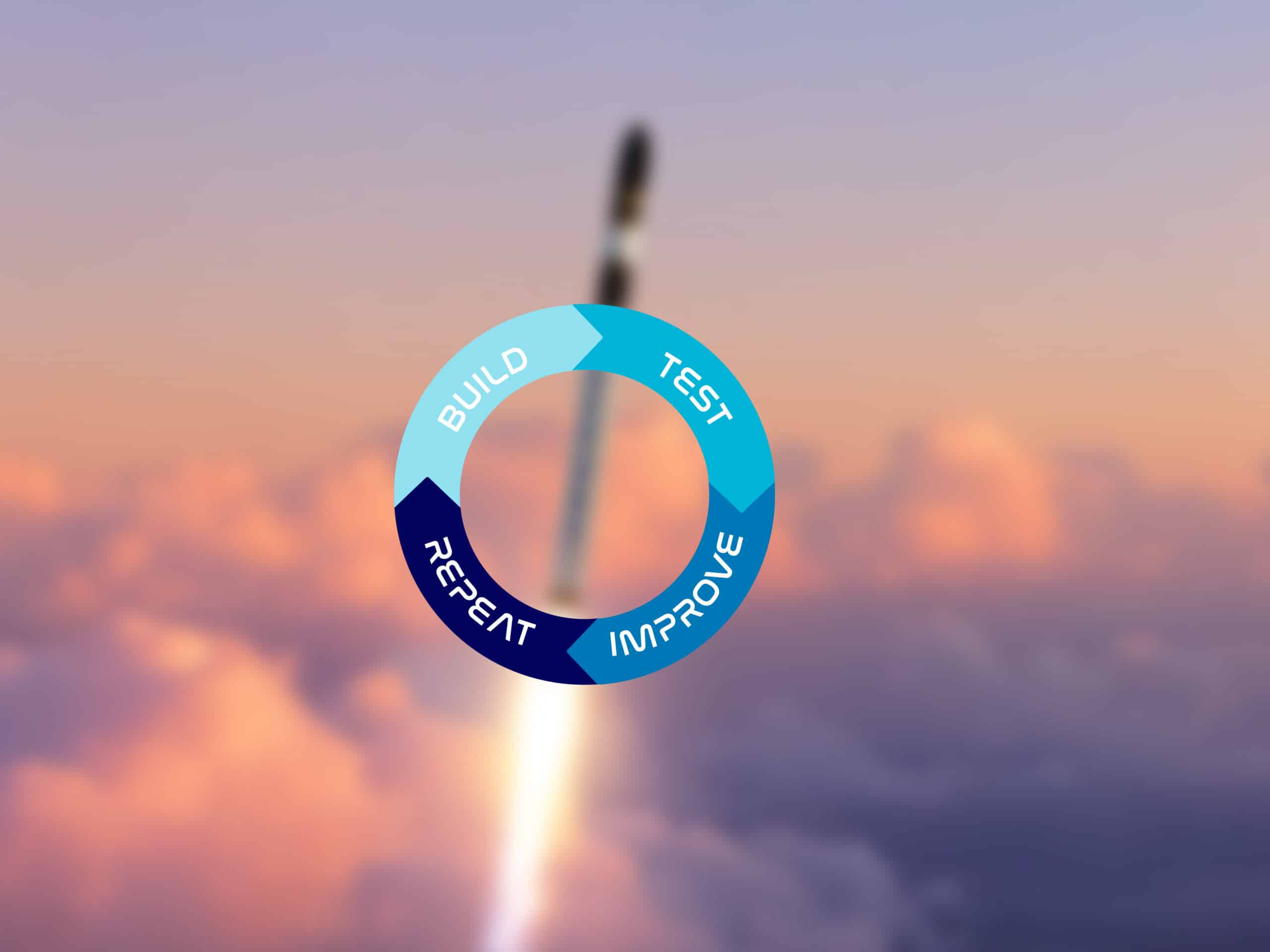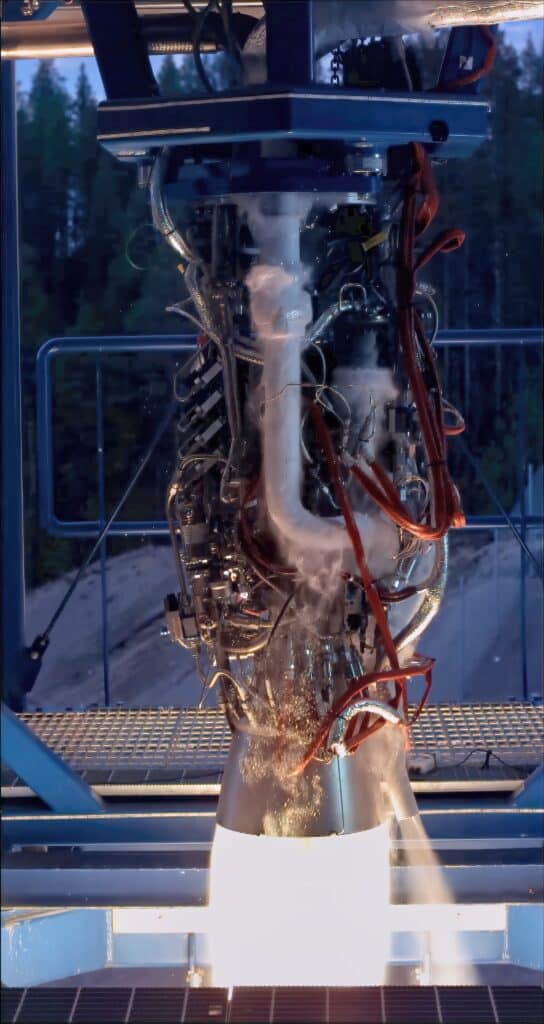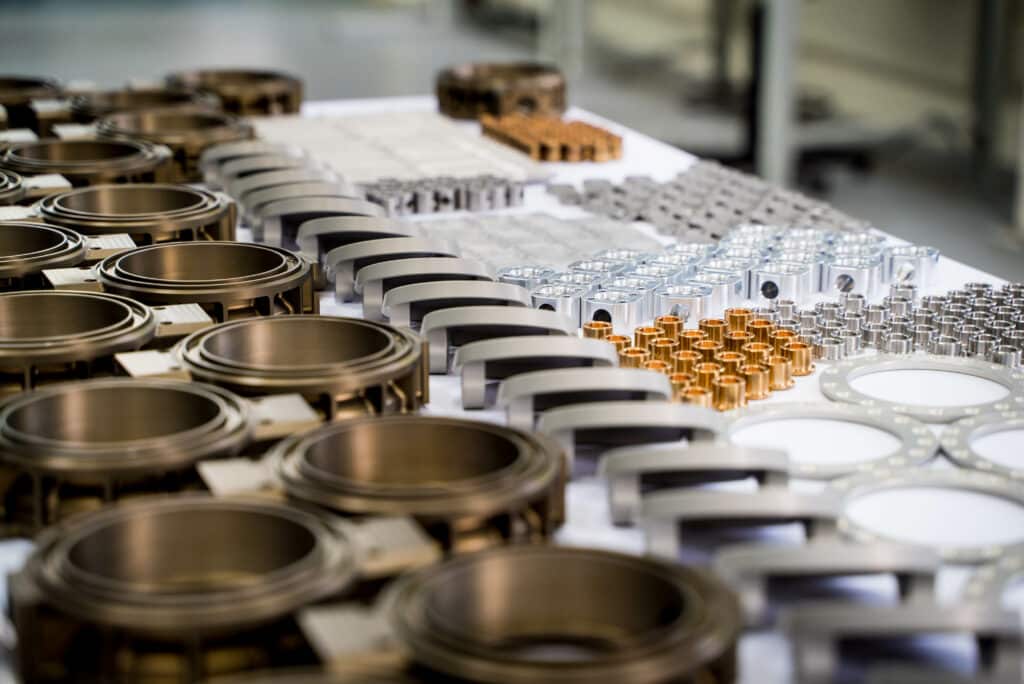
Iteration is one of the most important aspects to make technical development fast, efficient and successful. RFA has a very original and unique way of keeping its iteration cycles short and moving quickly to further development steps.
Technical progress thrives on an apparent contradiction: on the one hand, development is thought of in terms of the end product, but on the other hand, the focus is always on the next iteration. Think of it like software: A base product is released early to get customer feedback and gain traction in the market. Constant updates and frequent patches are the core of development. So in terms of RFA, we have a final product in mind, but will start with a less capable “minimum viable product” (MVP) at the initial launch. We will then iterate performance and capabilities from launch to launch. So let’s get right to the heart of this blog post: one of the unique elements to RFA’s success is our iteration cycles. Here’s why and how.
Always on the move
At RFA, engineers are given responsibility for a system. From concept to test to qualification. While there is already a frozen version for the first flight, iterations of the systems for the second launch are already underway. Each engineer has to improve his system a little bit for each subsequent flight, improving performance while at the same time, reducing mass and cost. However, reliability and function always come first. To accomplish all of this, it is important that everyone involved looks at the ideas and steps with a fresh eye every day and is also willing to question and adjust their own decisions. We can tell you that: It’s not always easy. But necessary and already successfully applied by us several times.
We iterate in a different way

No simulation can give you the data and insight that a test in a real physical environment can. We stay practical and pragmatic and test as much as possible, once the analysis results have answered 50% of the questions at hand. In doing so, we think from big to small. That means we always take the most direct route to configurations when possible, testing entire parts and complete systems. A small team then takes care of the problem of a sub-component, while high-level testing can continue. This way, we are able to do large iterations and find quick and workable solutions. We never dwell too long on individual stumbling blocks, but simply flick away a pebble. In this way, we shorten development time and arrive at reliable iterations based on real world testing.
Another crucial point is how we test. Protect test stands with sand-filled shipping containers. Qualify turbopumps with helicopter engines. Test IMUs on tiltable workbenches. Buy used vacuum chambers. It doesn’t all have to be shiny, new and expensive – it has to work and fulfill its purpose which is to validate our concepts and components. Full stop. Our motto is always “testing over simulating” as no simulation can deliver results as quickly, comprehensively and effectively as a real test. Especially if it fails.
So far, we can state that this path is leading us very successfully towards the first flight. In the course of development, we have overturned major future-oriented decisions and taken a completely new approach. But we have never stood still. New designs and parts are always being worked on while a team deals with challenges that have arisen.
Do not reinvent the wheel
We use as many industrial components as possible from, among others, the automotive, oil and energy industries. For those industrial components we can rely on years of experience and quality from existing industries. In concrete terms, this means that our rockets could have the same valves as your car. Or the screws that attach your TV to the wall. Or your favorite beer might have been brewed in one of the beer barrels from our suppliers for the rocket stages. No joke: when we were thinking about the best way to manufacture our stainless-steel tanks for our rocket stages, we found a supplier for breweries who builds the large brewing tanks for them. Well, this supplier now also builds rocket stages. In one sentence: We no longer develop equipment for space, but demonstrate that standard components function reliably in space. Of course, once we have found a suitable component in the existing industry, we iterate with the component manufacturer to ensure that the off-the-shelf parts are made specific for RFA, fulfilling the highest standards for reliability. This way, we integrate existing supply chains for other industries into our product, while establishing a price point that is unknown in the current space industry. A disruptive approach for the space industry.
As an integrator, we bring together our knowledge of the entire launch system with the external knowledge of our suppliers. At the same time, we have the choice between many industrial component suppliers. This way we are independent and can always choose the best supplier according to price and performance, avoid sources of error that would occur in in-house development and have partners and suppliers that have been with us for a long time, know us and have grown with us.
Made in Germany and Europe

We are often asked why we chose Augsburg, of all places, as our headquarters. One elementary factor is that 80% of our suppliers are located within a radius of less than 200 km. They are important because we try to build a rocket from proven and reliable parts used in other industries. We believe in the engineering power of the German and European supplier industry, which is why we do not have the arrogance to say, for example, that we can build a better valve than someone whose component is used millions of times in cars. That is why we do not reinvent the wheel and use these components. Just because a part or technology wasn’t designed for space doesn’t mean it won’t work perfectly there. Of course, we still carry out test campaigns to ensure that these components are suitable for our use. So we iterate not only our own designs, but also purchased components.
Made in Germany and Europe
We are often asked why we chose Augsburg, of all places, as our headquarters. One elementary factor is that 80% of our suppliers are located within a radius of less than 200 km. They are important because we try to build a rocket from proven and reliable parts used in other industries. We believe in the engineering power of the German and European supplier industry, which is why we do not have the arrogance to say, for example, that we can build a better valve than someone whose component is used millions of times in cars. That is why we do not reinvent the wheel and use these components. Just because a part or technology wasn’t designed for space doesn’t mean it won’t work perfectly there. Of course, we still carry out test campaigns to ensure that these components are suitable for our use. So we iterate not only our own designs, but also purchased components.

The right mix: experienced non-space suppliers, in-house development, and a brilliant team
We are working on our prototype, whose initial launch is drawing ever closer. However, we have already mastered the first steps towards industrialization and are making rapid progress.
1 – We iterate quickly and relentlessly. With all the capabilities in-house to produce, test and modify critical components ourselves, our test campaigns are designed for short iteration cycles and do not come to a stop due to failures. We basically rely on failures to learn as quickly as possible. With modern technology that we can update or realign at any time without much effort, we are flexible in production and, most importantly, immediately scalable.
2 – In addition, our suppliers build industrial components and do not normally supply aerospace. They supply components that meet established industry standards in reliability, quality and functionality, e.g. from the automotive industry. This means that we use components that have been proven and optimized. We then qualify them only for our application as space technology. Not everything that works in space has to be designed for space.
3 – Our brilliant team thinks day and night about how to further iterate designs, hardware and processes for the next flight. To improve the product just like software. This mindset creates an inspiring environment and everyone contributes their part to building the rocket. Through openness to new approaches and an unpretentious attitude to the process, the way is the goal.
Our team now consists of over 200 space enthusiasts from around 40 nations. We have experienced space professionals on board and people who come straight from university. A good mixture, that always questions well-trodden paths.
In summary, strong industrial suppliers, in-house testing capabilities and an iterative mindset are creating a paradigm shift: We no longer develop a product that is optimized from the start and then sold unchanged for years. Instead, we pragmatically and practically improve product and its performance on an ongoing basis to achieve even higher reliability, quality and performance. We build with industrial components, permanently test at system rather than component level, and iterate from flight to flight to improve the performance of our RFA ONE rocket. Having built this process reliably, effectively and efficiently is one of the key success factors of RFA.
Stay up to date with The Preburner blog and all of our latest posts by signing up.
Interested in featuring us?
Copyright 2024 © All rights reserved.
If you’re interested in receiving our press kit, please enter your details below. We’ll review your request and get back to you ASAP.
If you’re interested in receiving access to our Payload Users Guide for our Redshift OTV, please enter your details below.
If you’re interested in receiving access to our Payload Users Guide for our RFA ONE, please enter your details below.
We will get back to you soon.

Necessary cookies are absolutely essential for the website to function properly. This category only includes cookies that ensures basic functionalities and security features of the website. These cookies do not store any personal information.
Any cookies that may not be particularly necessary for the website to function and is used specifically to collect user personal data via analytics, ads, other embedded contents are termed as non-necessary cookies. It is mandatory to procure user consent prior to running these cookies on your website.
Analytical cookies are used to understand how visitors interact with the website. These cookies help provide information on metrics the number of visitors, bounce rate, traffic source, etc.
Performance cookies are used to understand and analyze the key performance indexes of the website which helps in delivering a better user experience for the visitors.
Undefined cookies are those that are being analyzed and have not been classified into a category as yet.